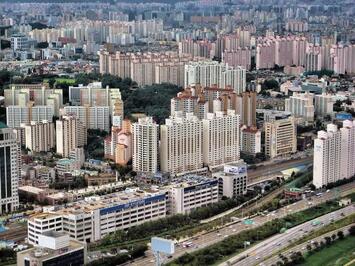
Much of Seoul is a sea of high-rises. And not just Seoul: Busan and other cities in South Korea have lots of high rises. More than half of all South Korean households live in high rises, and well over 60 percent live in some kind of multifamily housing.
South Korea also has the lowest birthrate of any country in the world. The latest numbers say the average woman has just 0.70 children in her lifetime. Birthrates need to be 2.1 per woman for a population to remain constant; at 0.70, South Korea will be almost totally depopulated in just three generations. Seoul’s birthrate is 0.64 and, due to an aging population, it will likely fall to 0.30 in the next ten years.
It is strange that a few decades ago we were worried about overpopulation and now we need to worry about population decline, at least in the developed world. A birthrate of 0.70 heralds an existential collapse for any country that doesn’t welcome immigrants — and I know of only two countries that welcome and assimilate immigrants, as opposed to isolating them as most European countries do.
South Korea’s high-rise housing and low birthrates are closely related. People don’t have children if they don’t have room for them. High rises are expensive to build so living space is at a premium. Birth rates are declining throughout the developed world, but they have declined the most in countries like South Korea, Russia, and China that have tried to house most of their people in high rises.
South Korea became a high rise country when it rapidly industrialized after the end of the Korean War. People moving from rural areas to the cities to get jobs created a housing crisis, and then-current urban planning theories held that high-rise housing was the best way to house people. Remember that, even though South Korea was the “good guys” in the Korean war, the country was still a dictatorship until about 1990, which meant the leadership could direct the country into one style of housing even if residents might have preferred otherwise.
Admittedly, South Korea has one of the highest population densities in the world with 1,340 people per square mile. But the country could have housed most of its population in low-rise apartments and single-family homes and still left well over 80 percent of its land for farming and other rural purposes. South Korea’s urban areas make up 17 percent of its land but, even with all of its high rises, have an average of less than 7,000 people per square mile. For comparison, 73 percent of the residents of Philadelphia live in single-family homes (mostly townhouses) yet the city’s population density is nearly 12,000 people per square mile.
The current urban planning fad is for mid-rise housing instead of high rises, but the result is the same: cramped quarters unsuited for raising children. In 1996, Portland planners set a target of reducing the share of the region’s households living in single-family homes from 65 percent (which is what it was in 1990) to 41 percent by 2040. Planners have had enough of an impact to date that Portland has a pretty low birthrate, though its suburbs are higher.
Read the rest of this piece at The Antiplanner.
Randal O'Toole, the Antiplanner, is a policy analyst with nearly 50 years of experience reviewing transportation and land-use plans and the author of The Best-Laid Plans: How Government Planning Harms Your Quality of Life, Your Pocketbook, and Your Future.
Photo: Seoul apartment buildings by Francesco Anzola via Flickr, under CC 2.0 License













indebtedness
Purchasing more household space may be difficult also because of the already high consumer debt in South Korea.